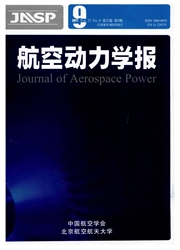

 中文摘要:
中文摘要:
大功率汽轮机低压排汽缸的气动性能分析和设计对于提高机组的经济性具有非常重要的作用。低压末级与排汽缸间的相互作用以及排汽缸内的复杂结构导致排汽缸具有典型的非定常和非周期性的流动特性。介绍了排汽缸的基本结构特点,综述了国内外在排汽缸气动设计和性能分析方面的研究进展,给出了西安交通大学TurboAero研究团队在大功率汽轮机低压排汽缸全三维性能分析和气动设计方面的研究结果,最后讨论了大功率汽轮机排汽缸方面的研究展望。排汽缸气动性能的影响因素可概括为:末级动叶出口旋流、顶部间隙射流、动叶尾迹和排汽缸几何结构。排汽缸的气动性能研究需要耦合低压缸通流结构开展,充分考虑通流结构和排汽缸间的相互作用。
 英文摘要:
英文摘要:
The aerodynamic performance analysis and exhaust hood design play an important role in improving the economics of large power steam turbines. The interaction between the last stage and diffuser of the exhaust hood, as well as the complex exhaust hood structure with intensifying plate and bracing pipe, will result in the unsteady and non-periodic flow pattern in the exhaust hood. The basic structure features of the exhaust hood are firstly introduced, and the state-of-the art aerodynamic design and performance analysis of the exhaust hood using experimental measurements and numerical simulations are reviewed. Three-dimensional aerodynamic performance analysis of the last stage and exhaust hood in consideration of the last rotor tip leakage is illustrated in the TurboAero Group of Xi' an Jiaotong University. In the end, the research and development of the exhaust hood for large power steam turbine in the aerodynamic performance analysis and optimization design are summarized. The influence factors of aerodynamic performance for exhaust hood are summarized as follows: swirl flow from the last stage rotor exit, tip clearance jet flow, rotor wake and geometric parameters of exhaust hood. These interactions of low pressure cylinder and exhaust hood are indispensable for investigating the aerodynamic performance of the exhaust hood.
 同期刊论文项目
同期刊论文项目
 同项目期刊论文
同项目期刊论文
 Investigations on the Rotordynamic Characteristics of a Hole-Pattern Seal Using Transient CFD and Pe
Investigations on the Rotordynamic Characteristics of a Hole-Pattern Seal Using Transient CFD and Pe Effects of Sealing Clearance and Stepped Geometries on Discharge and Heat Transfer Characteristics o
Effects of Sealing Clearance and Stepped Geometries on Discharge and Heat Transfer Characteristics o 期刊信息
期刊信息
